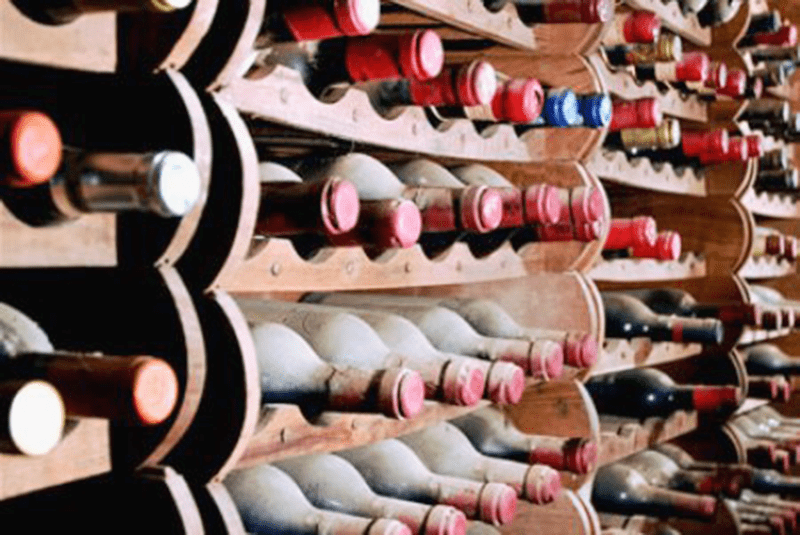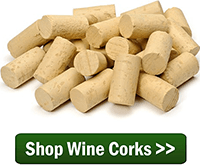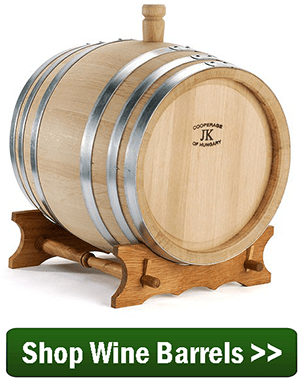 You can’t read very long on the subject of wine making without running across the warnings of excessive air exposure and how oxygen can turn a great wine into a brown, caramelized mess through a process of oxidation. Books, websites and even this blog have expressed these cautions.
You can’t read very long on the subject of wine making without running across the warnings of excessive air exposure and how oxygen can turn a great wine into a brown, caramelized mess through a process of oxidation. Books, websites and even this blog have expressed these cautions.
The reality is without some oxygen being available, the progression of a wine’s aging process can be brought to a near standstill. Wine needs oxygen to age. Without it a wine will not fully reach its aging potential. There is a solid relationship between oxygen and wine aging, it’s just a matter of finely controlling how much dissolved oxygen is in the wine.
Once the wine is bottled, it begins a series of changes. Tannins become less harsh, aromas tend to develop a richness, etc., but all of this can not take place without a slow – very slow – infusion of oxygen. Oxygen is the catalyst for all these changes during the wine’s maturation process.
But this oxygen needs to be given slowly. If too much oxygen is made available to the wine too quickly, it will develop symptoms of bottle shock. This basically means the aging process is out of balance. More oxygen is being dissolved into the wine than it can process for aging. The wine will taste flabby and lifeless with little bouquet, and worse yet, it could start to show signs of oxidation such a browning. So, while the wine need oxygen to age, it needs it in very small doses of long periods of time. This is the most important thing to understand about oxygen and wine aging.
A wine bottle and its cork can be considered a wine preservation system. It’s job is to preserve the wine and allow it to develop steadily and evenly as time passes. How well the cork seals or how well it allows air to permeate, controls the rate of aging.
While it may be your instinct to try to age the wine as quickly as the wine will bare, you don’t want the wine to age-out too fast. This is because the wine will begin to slowly start to degrade after doing so. A bottle of wine has a beginning and an end – an aging life-cycle. There is a peak in flavor along this life-cycle. You don’t want the wine to take too long because you’ll end up drinking your wine when it has not yet reached its best.
For example, our Superior Grade Straight Corks work well for wines that you intend to consume in about 3 years time. Our Extra-First Grade Straight Corks are for wines you intend to consume over a 4 or 6 year period. Extra-First Grade is denser than the Superior Grade so less air gets through, slowing the aging process.
Then there’s Synthetic Corks. These corks are designed to allow the optimal amount of air to pass over time. They are ideal for wines that you intend to age for for than 18 month. They also work well for early aging wines such as Zinfandel where little oxygen is needed for the wine to come into fruition.
 For these reasons, when you buy corks their density should be taken into consideration. By selecting the right grade of cork you can control the wine’s rate of aging to one that is appropriate for the needs of that particular style and to the needs of your consumption.
For these reasons, when you buy corks their density should be taken into consideration. By selecting the right grade of cork you can control the wine’s rate of aging to one that is appropriate for the needs of that particular style and to the needs of your consumption.
Wine needs oxygen to age. Oxygen and wine aging go hand-in-hand, but it’s all about controlling how much. The key is to not let the wine get too much too fast. Keep it slow any steady.
—–
Ed Kraus is a 3rd generation home brewer/winemaker and has been an owner of E. C. Kraus since 1999. He has been helping individuals make better wine and beer for over 25 years.

What effect does waxing the cork have on preventing oxidation of the wine in bottles? Should waxing be used? If waxing the cork is used, what period of time is appropriate to pass before waxing the cork?
Oscar, sealing wax used to create an air-tight seal on corked wine bottles so it can help protect the wine from oxidation. It can also slow down the aging process. It also allows you to store bottles up-right or on their side. You do not need to wait any time after corking to add the sealing wax.
Hello Ed,
Thanks for highliting this issue.
In old times the wine was aged in barrels kept in dark underground place. So, it was aging properly collecting flavor and today you can see a bottle of such wine at auction offered for $1K or even higher… But industry wants to sell…sell..sell in bottles transported everywhere, so the sulfites were created to preserve the wine from spoiling.
1) I am using sulfites only to sanitize the bottles before bottling my wine. If I use cork my wine is good for 1 – 1,5 year after which it turns oxidased, gelling darker, losing flavor. Question: do I need to use more sulfites before bottling to preserve the wine for longer time?
2) I switch to screw top bottles and because it is blocking the oxygen to penetrate wine I can keep the bottle for years and it is going just better in taste the longer I keep it
Question: is cork no longer good to age the wine if the wine does not loaded enough with sulfites?
Question: if wine contains sulfites As it printed on EACH bottle, does that mean that no matter how many years of age has that wine, it has same flavor, because sulfites kill the fruit and wine does not collecting rich flavor anymore after that? I mean the wine 1998 is the same as wine 2018?
Please help me to understand this.
Thank you
Walter K.
Walter and Ed,
I, too, do not add sulfites at bottling, as I have a sensitivity to them. This means my wines have to remain in secondary ferment for a long time to completely finish. I use the best corks I can get, often from ECKraus, let the corks dry for 1-3 weeks with the bottles upright, then I pour a wax cap on the cork top, which I drive into the bottle (less than 5mm), and finish with 2 coats of wax on the neck and top. I store them on their sides.
My wines continue to change through the months and years after bottling, sometimes improving and sometimes not. But this is why they are interesting, and why I have been making wine for 41 years. I sacrifice stabilizing so I can drink my wines without the reactions to sulfites from which I suffer.
I’m a very low-tech wine-maker, but have success. Ed, can you make any recommendations for me regarding secondary ferment, bottling and storing since I use sulfites minimally?
Thank you so much. When I started making wine, yours was the company from which I purchased all my supplies and equipment – with the folded white paper catalog through the mail using personal checks!
Sincerely,
Jenny Y.
I understand that you are keeping the secondary long to make sure that all the sugars are gone before bottling, but the flip side to this is that extended time in the fermenter will also increase the wine’s risk of collecting contaminants. So it is important that you stay vigilant during this time.
One thing I might suggest is to use potassium sorbate once the fermentation has completed. Unlike sulfites, I do not know of any allergies caused by this ingredient. The instructions say to use 1/4 teaspoon per gallon, but in your situation you should be able to use less. What it does: is not allow any yeast or bacteria in the wine to grow. I believe that if you did use this you would not have to worry about extending your secondary fermentation, and you would not need to use wax on your bottles. And, most importantly, you wines would start showing more consistency. Something to think about.
Does using the shrink wrap over the corks affect the oxygen in any way?
In most cases, no. The amount of air movement we are talking about between the inside and outside of the bottle is so small that as long as the capsules have the typical pin-holes in them, there is no problem.